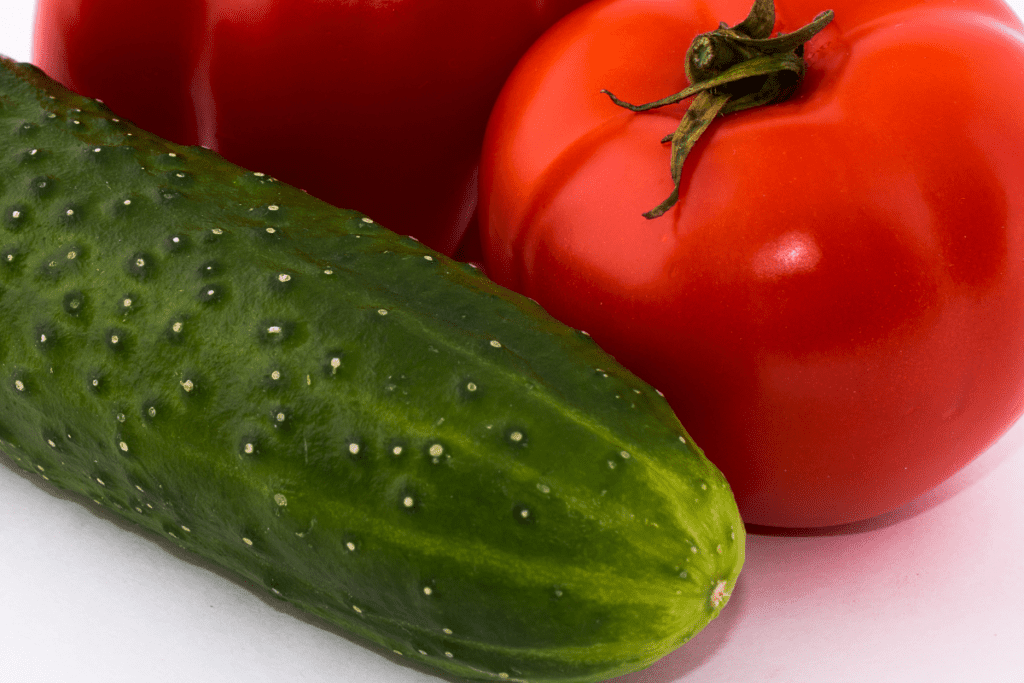- This topic is empty.
- AuthorPosts
- Febuari 5, 2025 at 1:50 um #553535

Tomatoes and cucumbers are commonly mistaken as vegetables due to their culinary uses. We often associate them with savory dishes and salads, but scientifically, they have different classifications.
The question of why a tomato is considered a fruit while a cucumber is not can be traced back to their biological structure and how they develop. This distinction may be puzzling for many, but understanding the criteria for botanical classification helps to clarify this apparent contradiction.
1. What Makes a Fruit a Fruit?
To understand why a tomato is a fruit and a cucumber isn’t, it’s crucial to first grasp the definition of a fruit in botanical terms. A fruit is the mature ovary of a flower, typically containing seeds. It develops after fertilization when the flower’s ovule transforms into a seed-bearing structure.
Fruits serve the essential purpose of spreading seeds for plant reproduction. This means that any plant part that forms from the flower’s ovary and contains seeds can be classified as a fruit, regardless of how it’s used in cooking. This is where the tomato fits the definition perfectly—its seeds develop inside a fleshy structure, making it a botanical fruit.
2. The Botanical Classification of Tomatoes
Tomatoes belong to the Solanaceae family, which includes plants such as peppers and eggplants. The development of a tomato begins with the fertilization of the flower, followed by the growth of the ovary. The fruit grows and ripens, eventually forming a fleshy structure with seeds inside.
This characteristic is what qualifies tomatoes as fruits from a botanical standpoint. Their fleshy texture and seed-bearing nature firmly place them in the fruit category, even though they are often used in savory dishes, much like vegetables.
3. The Role of Cucumbers in Plant Reproduction
Cucumbers, although also used in savory dishes, are classified differently. Botanically, cucumbers are fruits because they too develop from the ovary of a flower and contain seeds.
However, the difference between cucumbers and tomatoes lies in their structure and function. Cucumbers belong to the Cucurbitaceae family, along with melons and squashes.
The fruit is long and has a more rigid, often waxy exterior, unlike the soft, fleshy structure of a tomato. While cucumbers may meet the basic botanical requirements of a fruit, their texture and usage as a vegetable in the culinary world contribute to the confusion.
4. Culinary vs. Botanical Uses of Fruits and Vegetables
The distinction between fruits and vegetables becomes even more confusing when we look at how we use these plants in cooking. Tomatoes, though technically fruits, are used in savory dishes, making them behave like vegetables in our diets.
On the other hand, cucumbers are often treated as vegetables due to their mild, slightly bitter taste and texture that pairs well with salads and sandwiches.
This dual classification—botanical versus culinary—adds to the confusion surrounding why a tomato is a fruit while a cucumber is not. The way we consume and prepare these plants plays a significant role in how we perceive them.
5. Why Do We Confuse Tomatoes and Cucumbers?
The confusion between tomatoes and cucumbers can be attributed to their similar roles in our meals. Both are commonly found in salads, sandwiches, and other dishes where we might expect to find vegetables.
Additionally, the texture of a cucumber is similar to that of a tomato, further blurring the line. The classification of fruits and vegetables in the kitchen is based more on taste and usage, whereas the botanical classification focuses strictly on the plant’s reproductive role.
This discrepancy often leads to the mistaken belief that cucumbers are vegetables while tomatoes are not.
In conclusion, the reason why a tomato is a fruit and a cucumber isn’t comes down to their biological classification. Tomatoes are fruits because they develop from the flower’s ovary and contain seeds, fulfilling the botanical definition.
Cucumbers, despite also being seed-bearing, are commonly treated as vegetables in the culinary world due to their texture and flavor.
Understanding the difference between botanical and culinary classifications helps explain why these two fruits are often perceived differently. Ultimately, it’s the way we use them in cooking that leads to the common misconception surrounding their classification.
Read Also: The Power of Garlic: Can it Cure Toothache?
- AuthorPosts
- You must be logged in to reply to this topic.

